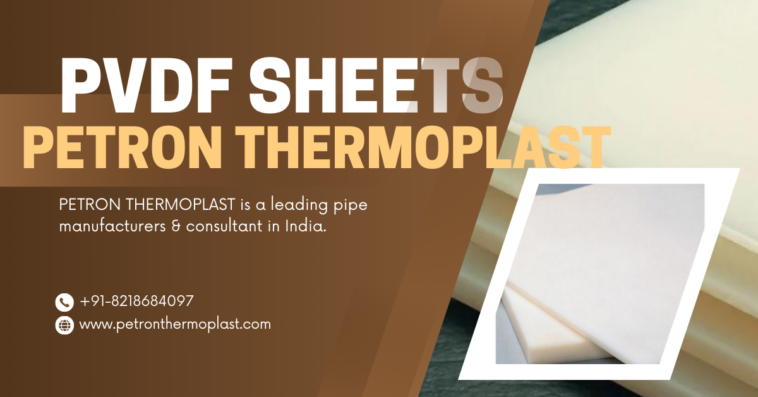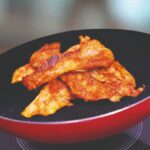Polyvinylidene fluoride (PVDF) plastic is a versatile and high-performance material that finds applications across various industries due to its exceptional properties and advantages. From chemical processing to architectural design, PVDF Plastic offers a wide range of benefits, making it a preferred choice for demanding applications.
Properties of PVDF Plastic: PVDF plastic exhibits several key properties that contribute to its widespread use:
- Chemical Resistance: PVDF is highly resistant to a broad range of chemicals, including acids, bases, solvents, and corrosive gases. This property makes it suitable for applications where exposure to harsh chemicals is prevalent.
- Thermal Stability: PVDF has excellent thermal stability, allowing it to withstand high temperatures without deformation or degradation. This property makes PVDF ideal for use in environments with elevated temperatures.
- Mechanical Strength: PVDF plastic possesses high mechanical strength and toughness, making it durable and resistant to impact and mechanical stress.
- UV Resistance: PVDF exhibits exceptional resistance to ultraviolet (UV) radiation, making it suitable for outdoor applications where exposure to sunlight is inevitable.
- Electrical Insulation: PVDF is an excellent electrical insulator, making it suitable for applications in the electrical and electronics industry.
- Flame Resistance: PVDF has inherent flame-retardant properties, making it suitable for use in applications where fire safety is a concern.
Advantages of PVDF Plastic: PVDF plastic offers numerous advantages over other materials, including:
- Excellent Chemical Resistance: PVDF is highly resistant to a wide range of chemicals, making it suitable for use in corrosive environments.
- Thermal Stability: PVDF can withstand high temperatures without losing its mechanical properties, making it suitable for high-temperature applications.
- Mechanical Strength: PVDF plastic is strong and durable, offering excellent resistance to impact and mechanical stress.
- UV Resistance: PVDF is resistant to UV radiation, making it suitable for outdoor applications without degradation.
- Easy Fabrication: PVDF plastic is relatively easy to fabricate using common techniques such as machining, welding, and thermoforming.
- Low Maintenance: PVDF plastic requires minimal maintenance and is easy to clean, making it a cost-effective choice for long-term use.
Disadvantages of PVDF Plastic: Despite its numerous advantages, PVDF plastic has some limitations, including:
- Cost: PVDF plastic tends to be more expensive than other plastics due to its superior properties and performance.
- Limited Color Options: PVDF plastic is naturally white, limiting the range of available colors for aesthetic applications.
- Fabrication Challenges: PVDF plastic can be challenging to fabricate due to its high melting point and crystalline structure, requiring specialized equipment and expertise.
PVDF Plastic Sheets: PVDF plastic sheets are widely used in various applications, including:
- Architectural Cladding: PVDF plastic sheets are used as architectural cladding materials due to their durability, weather resistance, and aesthetic appeal.
- Chemical Storage Tanks: PVDF plastic sheets are used to fabricate chemical storage tanks and containers due to their excellent chemical resistance.
- Semiconductor Manufacturing: PVDF plastic sheets are used in semiconductor manufacturing processes for their purity, chemical resistance, and thermal stability.
- Signage and Displays: PVDF plastic sheets are used to create signage and displays due to their UV resistance and ease of fabrication.
PVDF plastic is a versatile and high-performance material that offers a wide range of advantages, including exceptional chemical resistance, thermal stability, mechanical strength, and UV resistance. Despite some limitations, such as cost and limited color options, PVDF plastic remains a preferred choice for demanding applications across various industries. Whether used in architectural cladding, chemical storage tanks, semiconductor manufacturing, or signage, PVDF plastic continues to demonstrate its value as a reliable and durable material solution.
(FAQs) about PVDF Plastic:
What is PVDF plastic?
PVDF plastic, or polyvinylidene fluoride, is a high-performance thermoplastic polymer known for its exceptional chemical resistance, thermal stability, and mechanical strength.
What are the advantages of PVDF plastic?
The advantages of PVDF plastic include excellent chemical resistance, thermal stability, mechanical strength, UV resistance, ease of fabrication, and low maintenance requirements.
What are the applications of PVDF plastic?
PVDF plastic finds applications in various industries, including chemical processing, semiconductor manufacturing, architectural design, electrical and electronics, and signage.
How is PVDF plastic fabricated?
PVDF plastic can be fabricated using common techniques such as machining, welding, thermoforming, and injection molding.
This post was created with our nice and easy submission form. Create your post!





